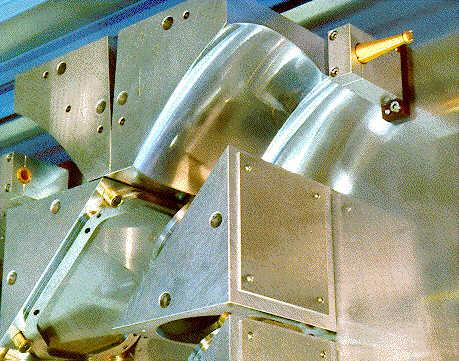Why use Quasi-Optics for ESR Systems

Quasi-optical systems have been built for mm-wave astronomy, plasma diagnostics, mm-wave radar, atmospheric studies and metrology applications for many years and is a proven technology, which is ideally suited to the demands of multi-frequency high field ESR. Corrugated feed horns can transform TE01 waveguide modes into fundamental Gaussian beams which can then be propagated through processing elements, using frequency independent reflecting optics with almost zero loss.
The main advantages and characteristics of Quasi-Optics for ESR include:
- Extremely low loss and non-dispersive transmission. Insertion loss waveguide to waveguide through a quasi-optical system is typically of the order of 1dB, including losses in the corrugated feeds.
- Systems can be designed using frequency independent reflecting optics (off-axis mirrors). These are only limited at the low frequency end by the size of the optics. Compared to lens-based optical systems, standing waves are negligible and cross-polarisation levels are very small.
- The ability to use both orthogonal polarisation states (both linear and circular) in signal processing. Wire-grid polarisers are almost perfect optical elements at this frequency and allow a number of low loss techniques unavailble to waveguide systems including induction operation.
- Compatibility with HE11 guide and mesh or beam-splitter coupled Fabry-Perots
- The availability of high precision, low loss attenuators and phase changers
- Quasi-optical free-space isolators/circulators give state-of the art performance in terms of isolation and insertion loss at mm-wave and sub-mm-wave frequencies over extremely wide frequency ranges. At 90GHz, insertion loss is 30dB. At 220GHz insertion loss ~1dB and at 270GHz insertion loss ~2dB. Experiments have indicated the Faraday rotators will work beyond 600GHz. This represents a major enabling technology for high field ESR systems.